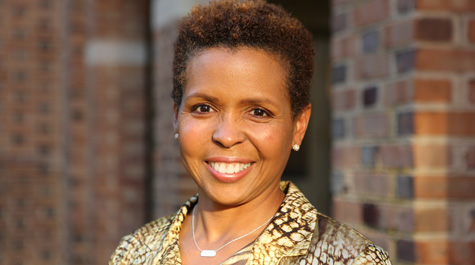Q&A with university ombuds Tatia Granger
Tatia Granger has been the university ombudsperson at William & Mary since 2008. The following is a Q&A with Granger on her role and responsbilities. - Ed.
Q. What exactly is an ombuds?
A. An ombuds (or ombudsman, ombudsperson) serves as an alternative resource for members of an organization to address conflict or identify resources to help move employees toward resolution of their organizational concerns. In my case, I function as an organizational ombuds (different from classical or advocate ombuds), which is described rather clearly in the mission statement of our professional organization (International Ombudsman Association-IOA) as: “a designated neutral who is appointed or employed by an organization to facilitate the informal resolution of concerns of employees, managers, students and, sometimes, external clients of the organization.” (Wesley, Margo, "The Complete Ombuds A Spectrum of Resolution Services," CPER Journal No. 166, June 2004). The key distinctions that guide my work are the pillars that form our standards of practice: confidentiality, independence, neutrality and informality. As I often remind my visitors, I’m here to help you explore your range of options around the situation at hand; I’m an advocate for the process, not necessarily the person.
More information on the history and work of ombudspeople may be found on the International Ombudsman Association website.
Q. What is your role on the William & Mary campus, and what people within the community can you help?
A. My role has evolved since I began in 2008 as the first university ombuds. Initially, I was hired to specifically work with our classified/operational and hourly employees. Since then, however, I am available to any member of our labor force who seeks my services, but my involvement with instructional faculty is most limited. Of course, I will respond to any inquiry and try to send the visitor in the appropriate direction if I can’t help directly. My availability has also increased over time. The position began as a half-time resource and has grown into a three-quarters time position which allows me to serve more visitors and engage proactively in some programs that have the potential to address some of what I often hear from visitors. For example, I’ve worked with Babs Bengtson around the Supervisors Institute, which has created a platform for sharing key information to new and veteran supervisors to help them develop and address common concerns such as managing performance evaluations, having difficult conversations and building effective teams. I hear about these issues in varying degrees from my visitors so I can sometimes help influence the content of training. Also, because I am not an agent of notice for William & Mary, I can offer visitors a confidential sounding board for situations they may not be completely sure of how to address.I refer undergraduate student inquiries to the Dean of Students Office. There is a graduate student ombuds for Arts & Sciences and a hybrid faculty-student model at VIMS.
Q. What are some examples of things that you can help employees with?
A. I addressed some of this above, but I will list some of the common issues I hear about:- differences of work style/approach with a colleague or supervisor or direct report
- concerns about fair execution of College policy/procedure
- difficulty finding or gathering information about employee benefits, rights, privileges
- concerns around organizational ethics, values and standards
Q. How do you help with issues involving conflict management?
A. This is a really common issue and I offer multiple options:- try to help identify the sources of conflict with visitor so we can carve a path forward
- help strategize around communication resources
- sometimes serve as a facilitator for discussion among parties
- coach employees around how to have the difficult conversation
 Skip to main content
Skip to main content

